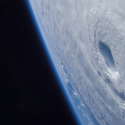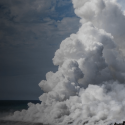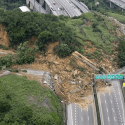It’s a bright, buzzing, cloudless day. Hundreds of people are at the beach, soaking up the hot summer sun.
What’s that? Something catches your eye. You look up at the sky and see an aurora? People around you start taking out their phones to post a picture of the spectacle. Then suddenly, everyone loses their phone signal. Something strange is going on.
A stream of solar particles is crashing into the Earth’s magnetic field, at speeds of up to 8 million km/h (5 million mph). You might want to be prepared, because the worst is yet to come. So here’s what you can do to survive a solar storm.
A coronal mass ejection is a massive burst of plasma and electromagnetic radiation released from the Sun. The good news is that the barrage of solar radiation can’t harm you, as long as you’re on Earth. Earth’s magnetosphere and atmosphere shield us from these dangerous particles.
But even though solar storms can’t hurt us physically, they can seriously affect our technology. One of the most devastating solar flares to hit Earth happened in 1859. It’s called the Carrington Event.
Telegraph networks across North America and Europe collapsed. The radiation even shocked operators, and set telegraph pylons on fire. We’re a society that’s so reliant on technology today, that if another big solar storm hit the Earth, the effects would be disastrous.
The particles would damage satellites in Earth’s orbit, causing our communications systems to fail. In the worst-case scenario, an intense solar storm could overload our electric grids, sending our world into a blackout.
So what can you do to prepare for a solar storm? Why should you avoid traveling during a solar storm? And why might you want to withdraw some cash right now?
Step 1: Prepare Ahead of Time
The main threat you’ll have to face during a solar storm is a blackout. That means no electricity, no communications, no internet … and no social media!?
You’ve got a better chance of surviving a blackout if you prepare beforehand. Have the essential items that you’d need for any type of disaster. Doomsday preppers recommend a 30-day supply of food and water.
Stock up on non-perishable foods, like canned goods and dried foods, since your fridge won’t be working. Each person will need about 4 liters (1 gallon) of water each day.
Now that you have the necessities on hand for any disaster, what should you do when a solar storm blackout happens? And what if you didn’t prepare in advance?
Step 2: Save Your Food
Grocery stores may run out of food with the disruption of supply chains. And if you can’t grow your own food, you’ll have to save your food for as long as possible.
If your water supply’s still working, fill up your bathtub and containers with water. Keep your fridge closed as much as you can. There won’t be any electricity, but it should keep your food at a safe temperature for about 4 hours.
Your freezer should stay cold for about 48 hours. And don’t forget to eat your fruits and veggies, those are the foods that will spoil first.
Step 3: Secure Your House
During the day, find and collect matches, flashlights, or any other sources of light. You wouldn’t want to be stuck in the dark, and we wouldn’t recommend making a fire in your house.
While you’re searching, make sure to lock all the windows and doors. Keep your home safe from any intruders and burglars when disaster strikes.
And reach out to your neighbors if there’s anything you can help them with. In tough times like this, they might not be prepared, or just need a friend to talk to.
Step 4: Don’t Travel
When a solar storm strikes, the last place you’d want to be is up in the air. Being at a high altitude can increase your risk of being exposed to solar radiation.
Not only that, but with satellite communication down, the plane’s navigation system won’t work. Planes could end up traveling in the wrong direction, and some might even collide.
And don’t even think about riding the subway. If you think that your rush hour commute is horrible now, imagine what it would be like if the system stops during a solar storm.
Step 5: Get Some Cash
Depending on how badly the power grids are damaged, it could take years to repair them all. If there’s no system in place to supply food and water, you might need money to buy some.
Since there’s no electricity to power the ATMs and banks, you’ll only have the money you have on hand. Break out that piggy bank and crack open your swear jar, just don’t hide them somewhere obvious like under your bed.
So, until the solar storm lets up and the lights flicker on, keep these tips in mind. Hopefully, our communities won’t plunge into chaos, and lead to an economic collapse. Don’t join that angry mob.
References
- “Severe Space Weather Events–Understanding Societal and Economic Impacts: A Workshop Report – Extended” Summary2020. spaceweather.org.
- “GEOMAGNETIC STORMS”. 2020. swpc.noaa.gov.
- “LARGE POWER TRANSFORMERS AND THE U.S.ELECTRIC GRID”2020. energy.gov.
- “E Source | E Source Market Research Reveals That Power Outages Cost Businesses Over $27 Billion Annually; Winter Storm Jonas Makes It Worse”. 2020. esource.com.
- “Halloween Storms Of 2003 Still The Scariest”. 2020. NASA.




























[…] should you do to survive a solar storm? Transcript and sources: https://whatifshow.com/how-to-survive-a-solar-storm/ Produced by the makers of What […]